At Kiama Woodcraft Group’s July meeting, David Bywater gave a detailed demonstration of his finishing process for boxes and other small items.
Materials:
- Whittle Waxes Evolution Gloss: David has found it best to purchase in 125mL sample pots, as it will start to set once the tin has been opened. Larger tins will result in a lot of waste if you don’t use it up quickly. You can buy multiple small tins when on special and store them, as it won’t start setting until the tin is opened for the first time. Evolution is also available in matt and satin finish, if a different look and feel is desired.
- Organoil Wax & Polish: Used for the final wax coat.
- Scotch-Brite Ultra-Fine grey pads: Can be bought locally at Illawarra Industrial Supplies (Unanderra), Shellharbour Industrial Distributors (Unanderra), or online. Cut the pads up for application – 2x5cm is good for things like clocks and boxes, use larger sizes for large surfaces like tables and benches.
- Cheap disposable paint brushes: Can be sourced in bulk at discount shops, hardware chains or online. Use a size appropriate to the items being finished. While brushes can be cleaned and reused, the time and solvents required for the cleanup do not make it worthwhile.
- Powder-free nitrile disposable gloves: Can be sourced in supermarkets, hardware chains or online. Wear them whenever applying finish to prevent contact with the skin.
- Clean, lint-free rags.
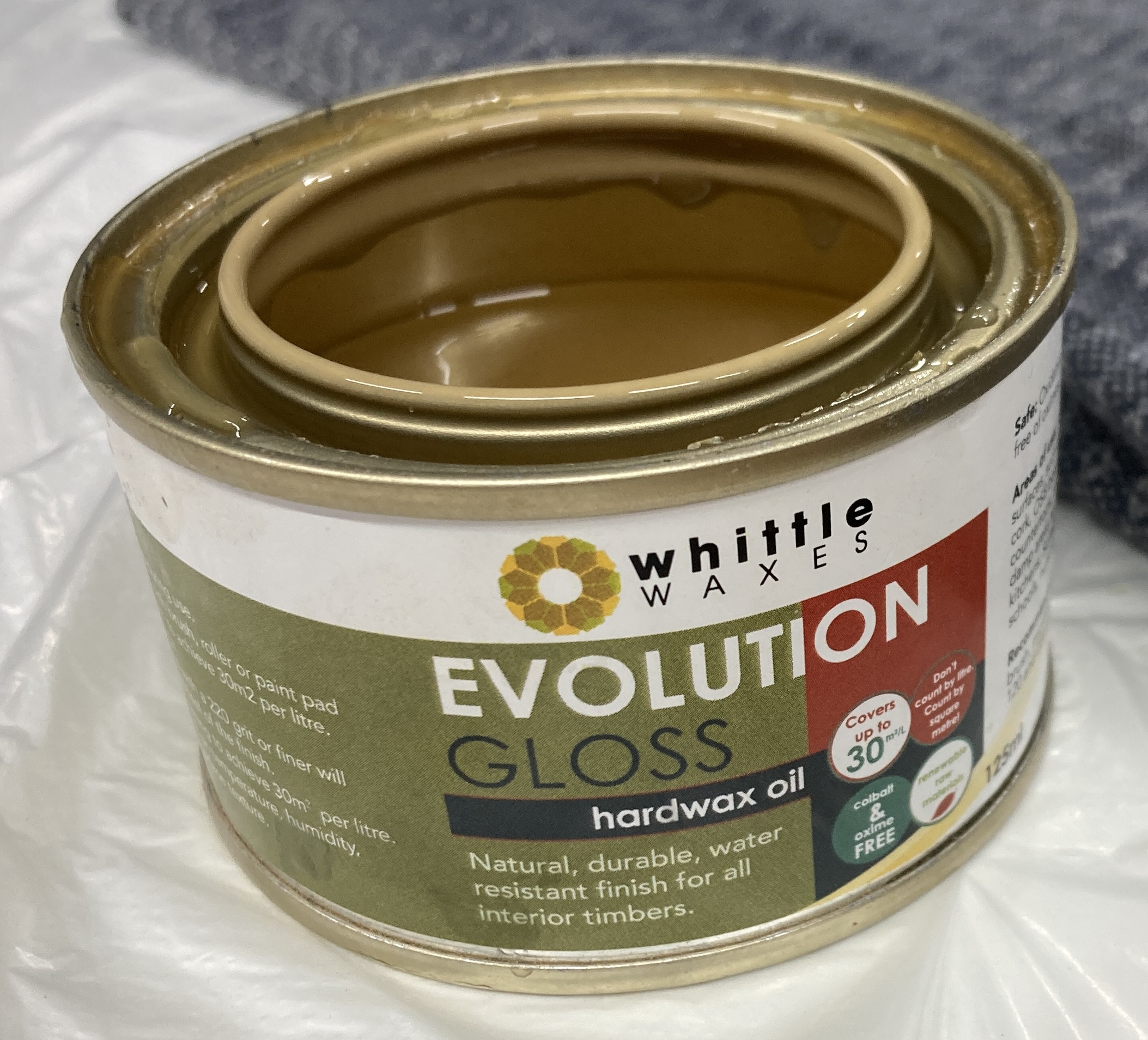

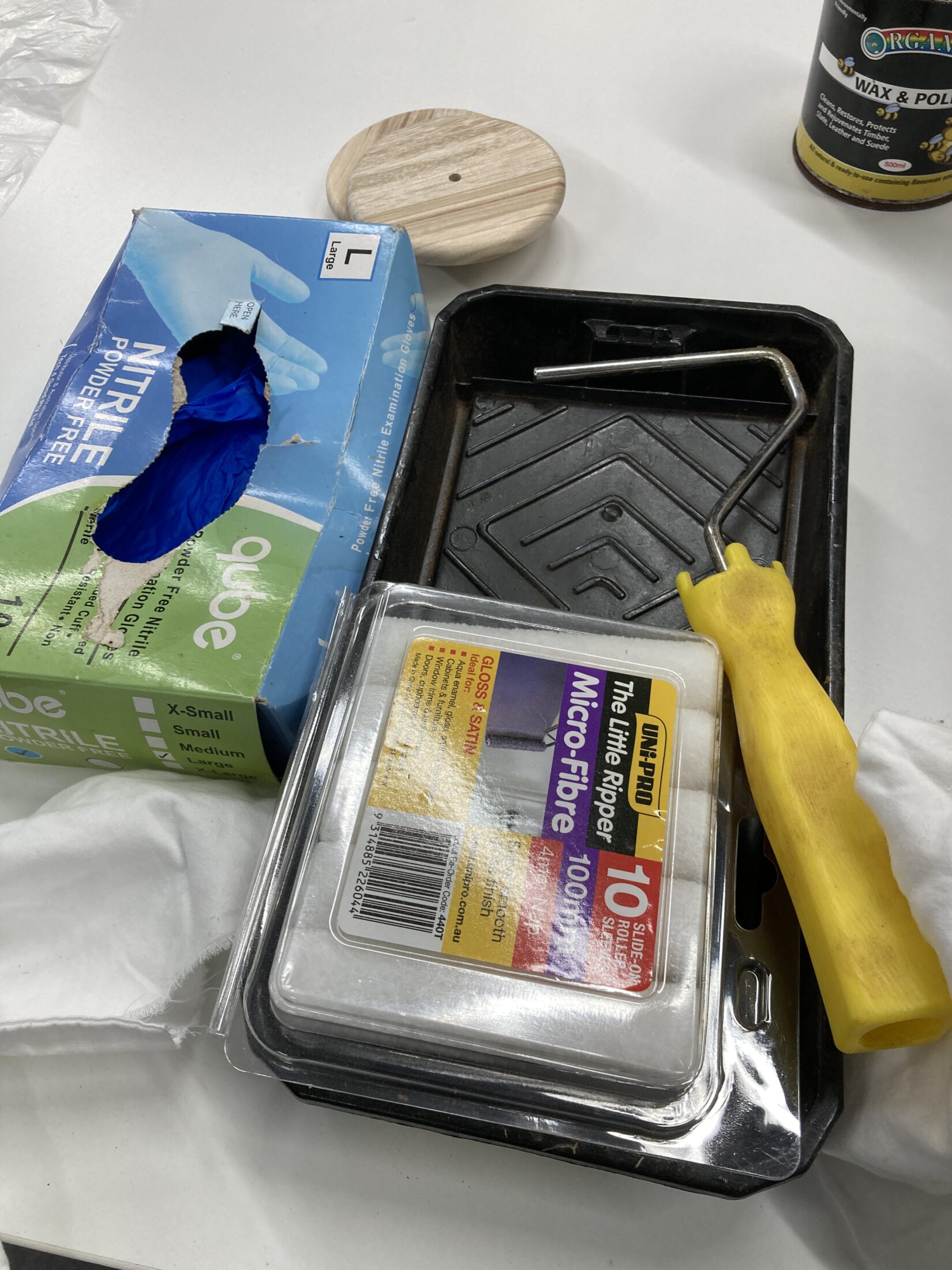
It is most efficient to finish items in batches, as there is some overhead to the setup and cleanup time. There is also some curing time required between applications of the finish, so be sure to plan accordingly.
In preparation for finish, sand the woodwork items to 240 grit. In David’s experience, there is no discernible benefit to sanding any higher than this. Clean the items to remove any loose particles and dust.
NOTE: In the below process, when gloves and rags get finish on them they must be disposed of properly. Either lay them out flat on a concrete floor to dry thoroughly, or place them in a container of water for disposal. Scrunched-up oily rags can heat up due to the exothermic reaction of curing, and in the right conditions can actually catch fire!
Use a disposable paint brush to apply a thin coat of the Whittles Wax Evolution all over the woodwork items. As each item is coated, place it on a rack to dry while moving on to other items.
Allow items to sit for 10 minutes or so, and then wipe down thoroughly with a rag. Aim to dry the entire surface – any wet areas left on the timber will mar the final finish. Leave on a rack to dry for at least a day – several days is even better, so the finish can cure.
Apply a second coat of Whittle Wax Evolution using a 2x5cm piece of Scotch-Brite Ultra-Fine pad. Rub all surfaces thoroughly, working the finish into a slight slurry. This will help fill the pores and grain of the wood, leaving a very smooth final finish.
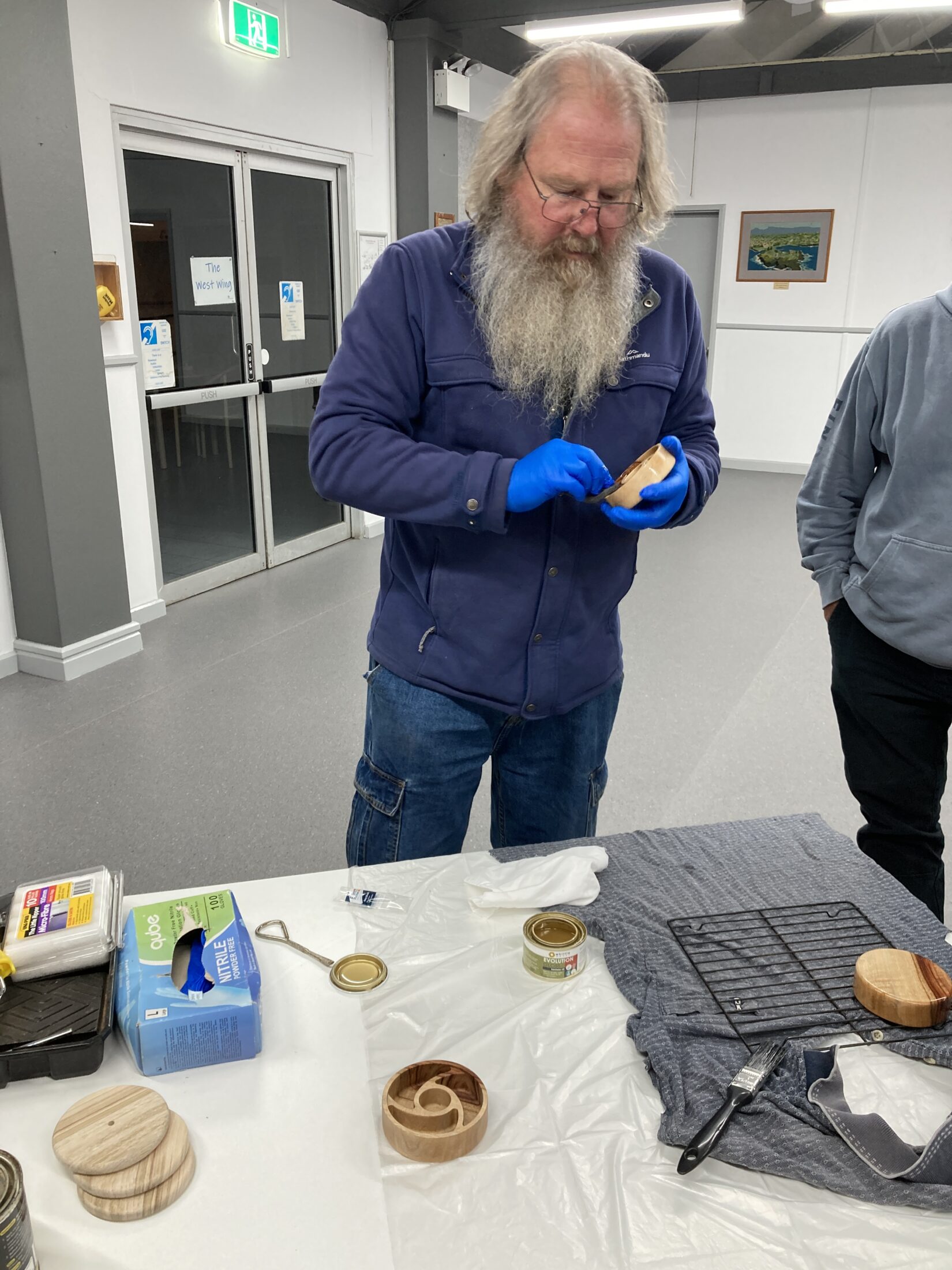
Again, allow to sit on a rack for 10 minutes or so and then wipe the items dry with a clean cloth. Leave on a rack to cure for at least a day – several days is better.
If desired, a third coat of finish can be applied in the same manner as the second – again, leave to dry for several days.
When the items have dried, rub a thin coat of the Organoil Wax & Polish into all surfaces with a cloth. Leave for 10 minutes or so, then buff with a clean cloth.
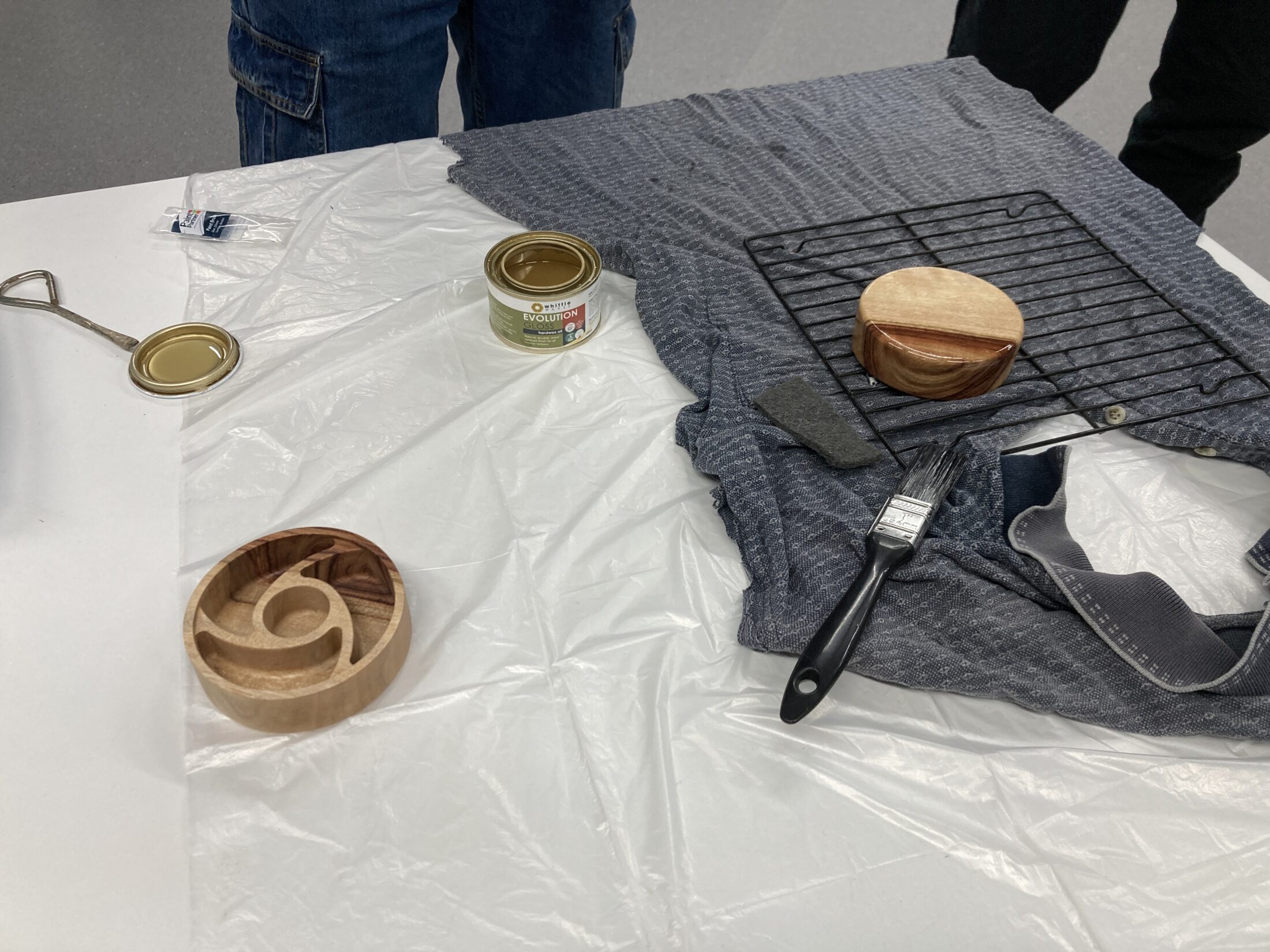
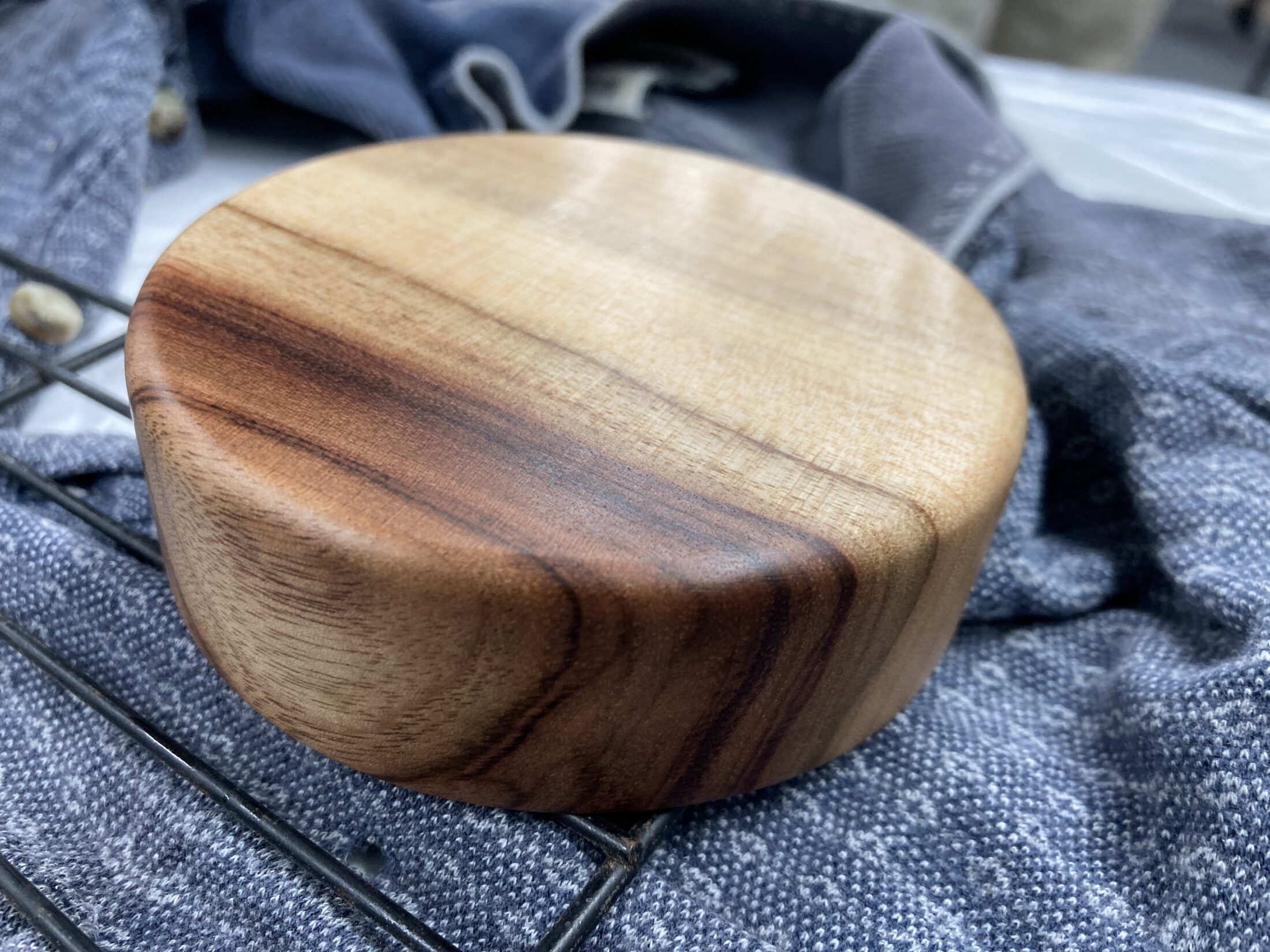
If finishing larger surfaces like tables or benchtops, apply the first coat with a disposable paint roller with a 4mm nap. Aim for a thin, even covering. The remainder of the process is the same, just using a larger piece of Scotch-Brite pad.
These products are food-safe once cured, so can safely be used on toys, fruit bowls, serving trays, etc.
Enjoy the beautiful finish on your woodwork!
